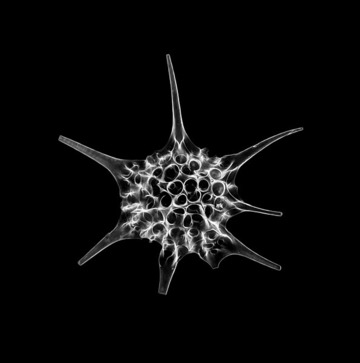Radiolarian_edited.jpg

Radiolarians are single cells, 0.1–0.2 mm in diameter, that have intricate mineral skeletons. Credit: Andreas Drews, Wikimedia, CC BY-SA 4.0
As ocean waters continue to warm along with the climate, scientists are trying to learn how thousands of different organisms will fare in the years to come. It turns out the Gulf of Mexico can offer clues, as researchers from the University of Texas at Austin are learning from a different global warming event that happened 56 million years ago. Back then, the earth experienced a spell of severe warming during an event called the Paleocene-Eocene Thermal Maximum, or PETM. It didn’t last long, perhaps up to 200,000 years, which sounds long until you remember that Earth is more than 4.5 billion years old.
PETM may be the closest comparison we have to where global temperatures are headed today, and it resulted in the largest deep-sea mass extinction event of the last 93 million years. But much of the life in the Gulf of Mexico was spared, as scientists have learned by examining microscopic fossils in rock chips brought to the surface by oil and gas drilling. The fossils came from a type of plankton called radiolarians, which require lots of nutrients and sea water no saltier than today’s oceans. An abundance of radiolarians means the Gulf didn’t become too salty or devoid of nutrients from the warming—thanks to the birth of the Rocky Mountains 20 million years before the warming began.
As the Rockies rose, rivers shifted course to travel through present-day Texas and Louisiana, carrying nutrients and sediments with them into the Gulf’s deep waters. Radiolarians and other plankton had all the food they needed to survive the mass extinction happening everywhere else. Today’s Gulf of Mexico is very different from the one millions of years ago, but these findings still offer insights into understanding climate change today.


